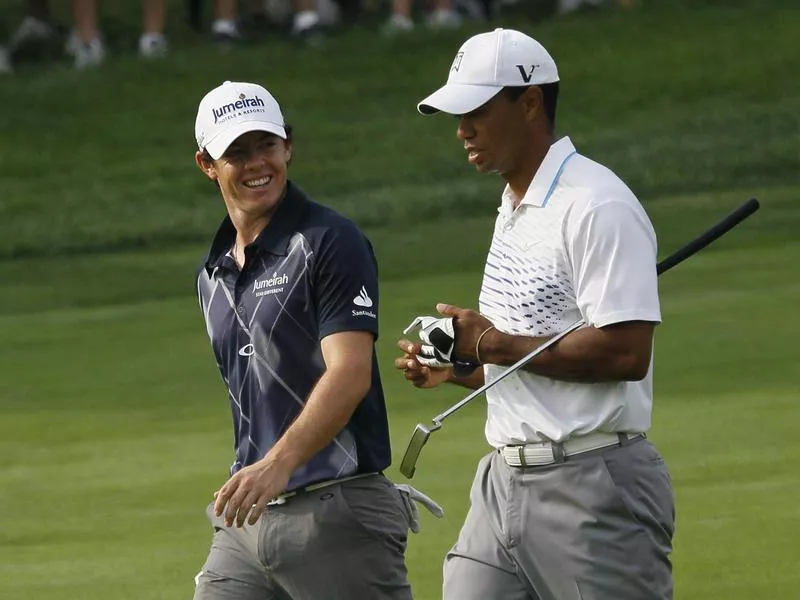
Rory McIlroy, left, and Tiger Woods are not talking about golf at the 2012 BMW Championship at Crooked Stick Golf Club in Carmel, Ind. Charles Rex Arbogast / AP Photo
Anytime I see two golfers walking down a fairway side-by-side, I always wonder what they’re chatting about. I know what they are not talking about, and that’s golf strategy as that is forbidden by the game’s rules.
Competing golfers can’t talk to each other about rules, shot distance, potential hazards or anything that could influence play.
Golfers can, of course, ask their caddie for information but asking a fellow golfer would result in a two-stroke penalty.
Fortunately, fans can no longer “call in” to tournament officials if they believe golfers are violating this rule, or any others, as they could do in the past, since the game’s governing bodies no longer accept input from armchair officials.